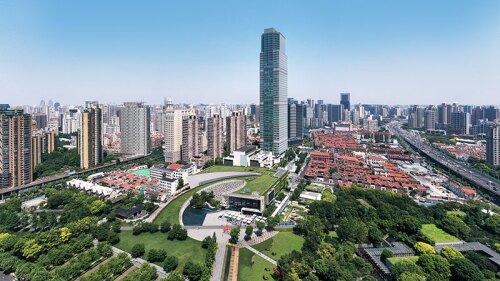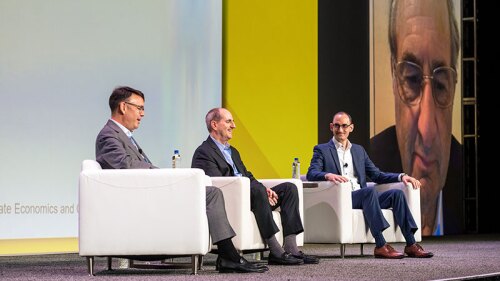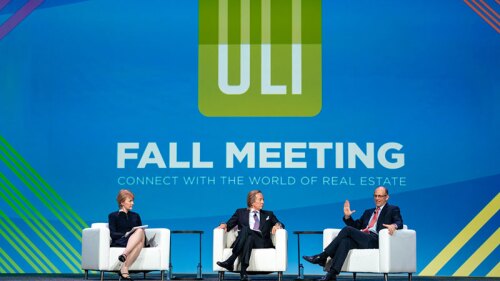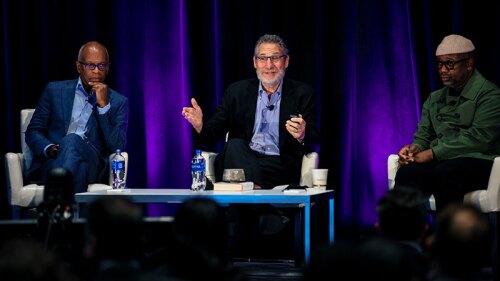Office - Buildings
ULI has released a case study on One Museum Place, a 250-meter-tall premium office tower with a six-story lifestyle podium located in downtown Shanghai. Developed by U.S.-based developer Hines, the mixed use project opened in March 2018, and has since won a number of green building certifications including LEED Platinum for Core and Shell and industry accolades including 2022 ULI Asia Pacific Excellence Award. Located next to Shanghai Natural History Museum and Sculpture Garden, One Museum Place is considered one of the city’s premium buildings.
Despite a forecast for higher inflation and rising interest rates, experts continue to have a favorable view on returns and performance for commercial real estate. However, the high tide of the improving economy is not raising all boats to the same level. There remains a clear bifurcation across and within property sectors.
The pandemic is a bit like jury duty: no one quite knows just how long it’s going to last. That analogy set the stage Tuesday morning for a panel discussion titled “Economic Outlook and What It Means for Real Estate”—with a keynote by Austan Goolsbee, professor of economics at the University of Chicago’s Booth School of Business, followed by a discussion with Constance Moore, former president and chief executive officer of BRE Properties and a ULI trustee and governor, and Roy March, chief executive officer of Eastdil Secured, also a ULI governor.
Jonathan Rose, center, in conversation with Commissioner of the Chicago Department Planning and Development Maurice Cox, and Rebuild Foundation executive director Theaster Gates Jr. Rose, a long-time ULI Trustee, is founder and president of New York-based Jonathan Rose Companies, a national mission-driven real estate development, planning and investment firm. Rose Companies has long been a leader in green building practices, and enhancing the social, health and educational opportunities for residents through its Communities of Opportunity programming.
An “urban exodus” may be a myth, but a hybrid of office-based and non-office workplaces may become a norm, say panelists Richard Florida of the University of Toronto, Diane Hoskins of Gensler, and Mark Grinis of EY.
In October, the ULI Greenprint Center for Building Performance announced an additional goal to reduce the operational carbon emissions of its members’ collective buildings to net zero by the year 2050. Eleven ULI Greenprint members have already publicly committed to this target on top of the 50 percent carbon reduction goal by 2030 that all ULI Greenprint members have already pledged.
In a new survey conducted by ULI and EY, real estate professionals said that they overwhelmingly expect increased remote working, including more working from home (96 percent), more remote working away from the home (72 percent), and more use of satellite offices at the edge of cities (67 percent).
The ULI Center for Capital Markets and Real Estate’s latest semiannual consensus forecast of real estate and economic indicators anticipates a 5 percent decline in real gross domestic product (GDP) for this year, with increases of 3.6 percent and 3.2 percent in 2021 and 2022, respectively. The semiannual survey based on the median of the forecasts from 43 economists and analysts at 37 leading real estate organizations completed in late September through early October, also anticipates this year’s unemployment rate to be 8 percent, declining to 6.6 percent in 2021 and 5.5 percent the following year.
Industry experts from around the world convened both online and in person at the 2020 ULI China Mainland Summer Meeting in July. While many speakers were bullish overall, opinions were mixed on traditional office and retail as the economy recovers from the global pandemic.
Sidewalk Labs recently announced that it would withdraw from a proposed smart city project in Toronto. But Sidewalk is already in talks to repurpose those innovations, said participants in ULI’s Spring Meeting Webinar Series.







